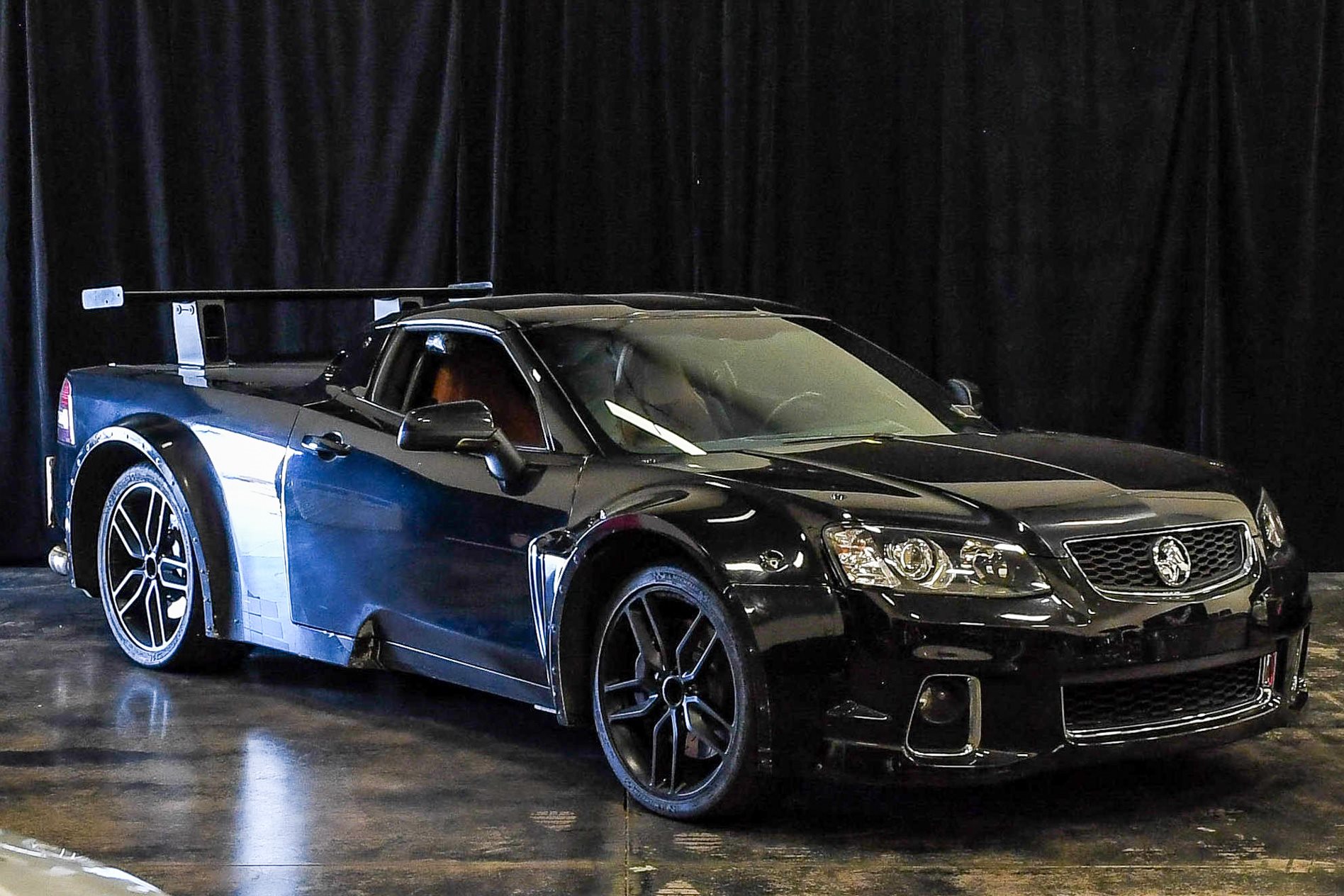
Holden ute-based Corvette prototype
First-ever C8 mule survives the crusher
On display at Corvette US launch
There’s irony, and there’s a sad irony. The fact that Chevrolet has rolled out Blackjack, the mutated lovechild of a Corvette C7 and a Holden VE ute, at the C8 launch in the US this weekend, is definitely the latter.
Australian journalists were invited to a C8 launch in Las Vegas right up until halfway through this week when news that General Motors had turned off Holden’s lights took centre stage.
Flying a cadre of scribblers across the other side of the world to drive an expensive sports car became about the last thing that the local arm could countenance, and the trip was duly cancelled – at some expense, we’d imagine.
According to reports in overseas publications, though, it appears that a singularly special guest awaited the Antipodean hordes.
Meet Blackjack, the original Corvette C8 mule
Blackjack, the first prototype that was used to test the veracity of the mid-engined concept for arguably the world’s best-known sports car, had been dusted down and trucked out from Michigan to take its place on a parquetry floor as part of a wider engineering display.

All pics: Chevrolet
The notion of a ute was chosen to try and mask the fact that the engine had moved to behind the driver’s cabin, but the Frankenstein proportions of the car – a VE front clip mated to a C7 Corvette cabin and a pick-up bed, topped with an inverted two-post wing and enormous wheel arches – led many (including Wheels) to speculate as to its true origins – Chevrolet’s first-ever mid-engined Corvette.
Underneath the glossy black paint, CNC-milled aluminium rails and mounts allowed engineers to fit a GM V8 – but Blackjack wasn’t designed to test engines or transmissions. Its function was to test the basics of the chassis layout; suspension hard points, engine location, centre of gravity and the like.
Besides the relocation of the engine from in front to behind the driver, the C8 also runs conventional coil spring-based suspension, rather than the oddball composite transverse components fitted to the C7.

Blackjack is basically Genesis – the first of the first for the Corvette C8.
Blackjack: the unlikely prototype survivor
Born almost seven years ago, the cost to make Blackjack is almost impossible to estimate. The rails and engine mounts, for example, were CNC-milled from huge blocks of aluminium, and the data recording equipment it carries in its Spartan cabin is worth millions.
It lived a life of secrecy, too, hidden away in a swipecard-protected warehouse in Warren, Michigan, while its drive team could stop the car, whip out a tarpaulin and cover the car in about five seconds in case an errant snapper was lurking nearby.
It’s remarkable that the mule has survived so long. Engineers by nature are not especially sentimental, and Blackjack’s job as platform verification prototype was pretty demanding. Once the job is done, a mule is usually sent to the crusher, living only as petabytes of data in an engineering database.
GM, however, saw fit to keep Blackjack, along with three other mules, to show off the development path that took the better part of a decade to complete.
Blackjack will hopefully spend the balance of its days at a museum, but there’s also every chance it will be returned to its secure warehouse in Michigan, stowed away under a tarp in the corner until it ends its days under a crushing press.

Blackjack is a snapshot of Holden’s talent
The fact that Aussie journos were so close to seeing it in the metal and fibreglass is a poignant and stinging reminder of what we’ve lost with the closure of Holden.
The automotive world is moving apace to an anodyne existence of modular platforms and shared drivetrains, but the engineering and design teams at Holden did things with that sameness that they really weren’t supposed to – and the fact that our Holden ute would form the id of its parent company’s fastest ever production car is both fitting and sobering.
The Corvette C8 is, at time of writing, still slated for sale in Australia, but isn’t likely to arrive this year – or even especially early in 2021.



